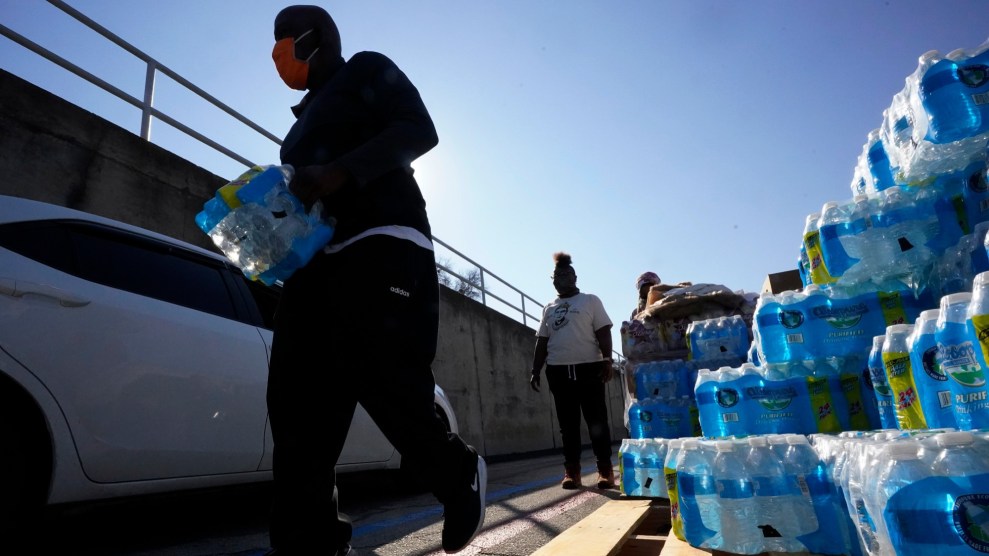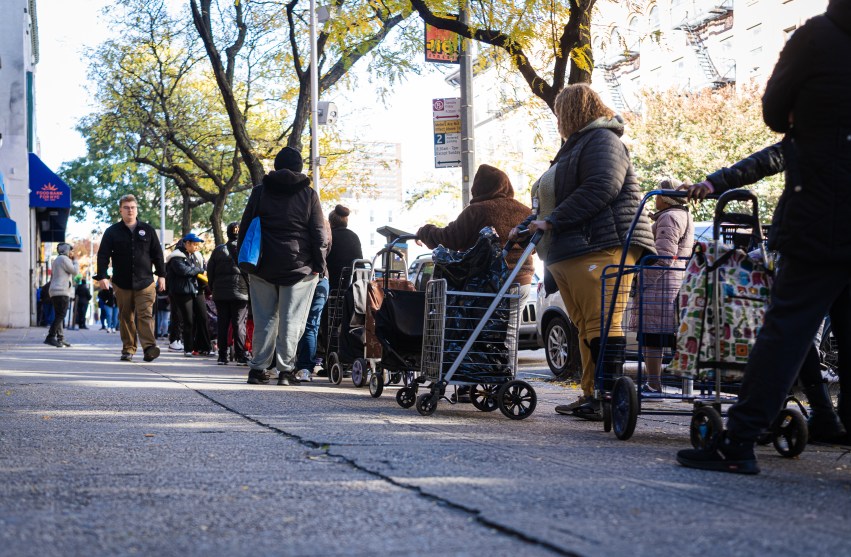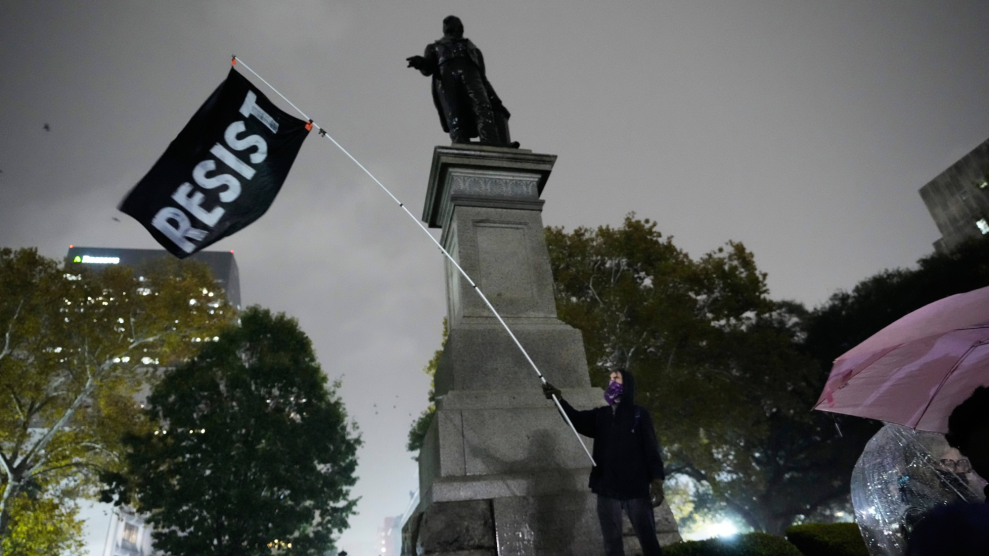
Eric Gay/AP
Days after a historic winter storm in Texas brought snow, ice, below-freezing temperatures, and a catastrophic power grid failure, the state is finally starting to thaw—but millions of people still don’t have access to water.
At the peak of the storm, more than 4 million people across Texas were in the dark. The state’s independent power grid, not designed to withstand freezing temperatures, failed as demand far outstripped supply. Though Texas officials were warned in 2011 that this very scenario could occur, they still failed to prepare for the disaster. Now, the power has come back for the vast majority of Texans, but their problems are just beginning.
Approximately 14.9 million people don’t have water in their homes. When temperatures plummeted, Texas officials told residents to let their faucets drip to prevent pipes from freezing. Then, when the water supply began to run low, officials reversed course and told people to turn off their water, causing pipes to freeze and burst.
In Houston, the fire department said it received 5,000 phone calls about broken pipes. In San Antonio, a city of 1.5 million people, 20 percent of residents don’t have water and 30 percent are facing low pressure issues. On Friday, every household in Austin either had low pressure or no water at all. The implications of going without water are always dire but more so in a pandemic. Not only do Texans not have any water to drink, they will also struggle to wash their hands, a key way to protect yourself from the virus. Across the state, firefighters struggled to find water to put out blazes and thousands of homes have burned.
Viral videos on social media have depicted a state contending with frozen home appliances, burst pipes flooding houses, and burning homes as Texas struggles to regain a sense of normalcy. Officials are warning it could be days before they can full count the dead, but there have been reports of children and seniors dying of hypothermia. As food and water lines stretch around city blocks, state officials have said it could be days before the water supply returns to normal.

















